Byron 10'6Updated 4 months ago
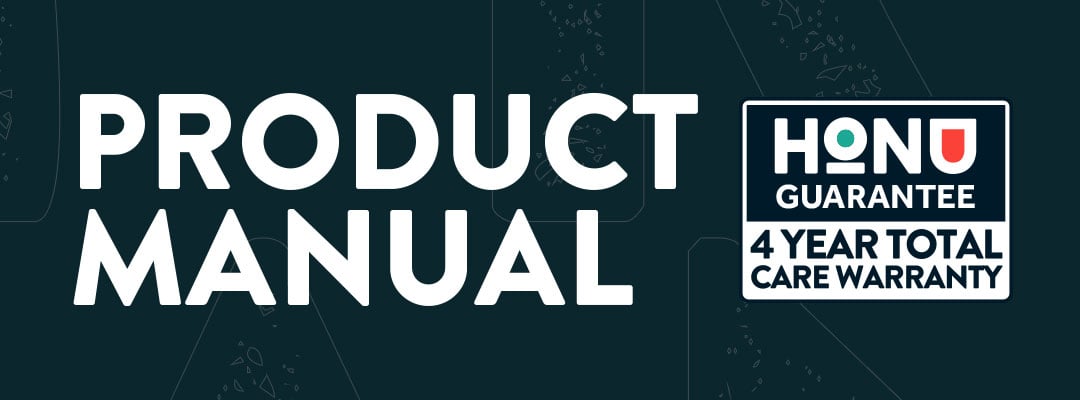
Honu boards are constructed using the most advanced materials and methods available today. Please take the time to read through this manual carefully to ensure you get the most from your board, stay safe, and have fun out on the water.
(If you want to quickly have a look at the safety information click here.)
Unpacking & Inflating your board
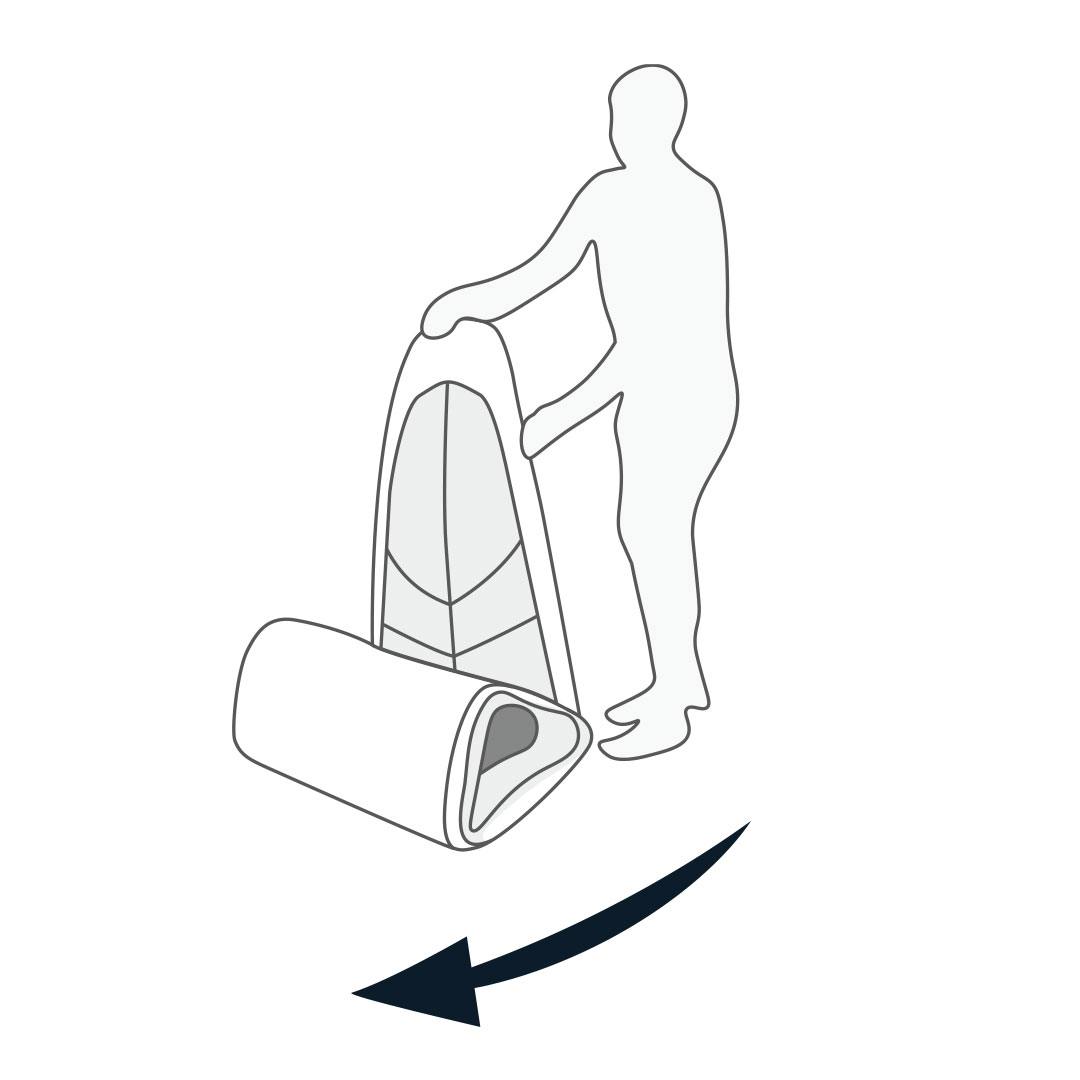
1. Unpack your board from its back and unroll onto a flat surface. Sand or grass is best.
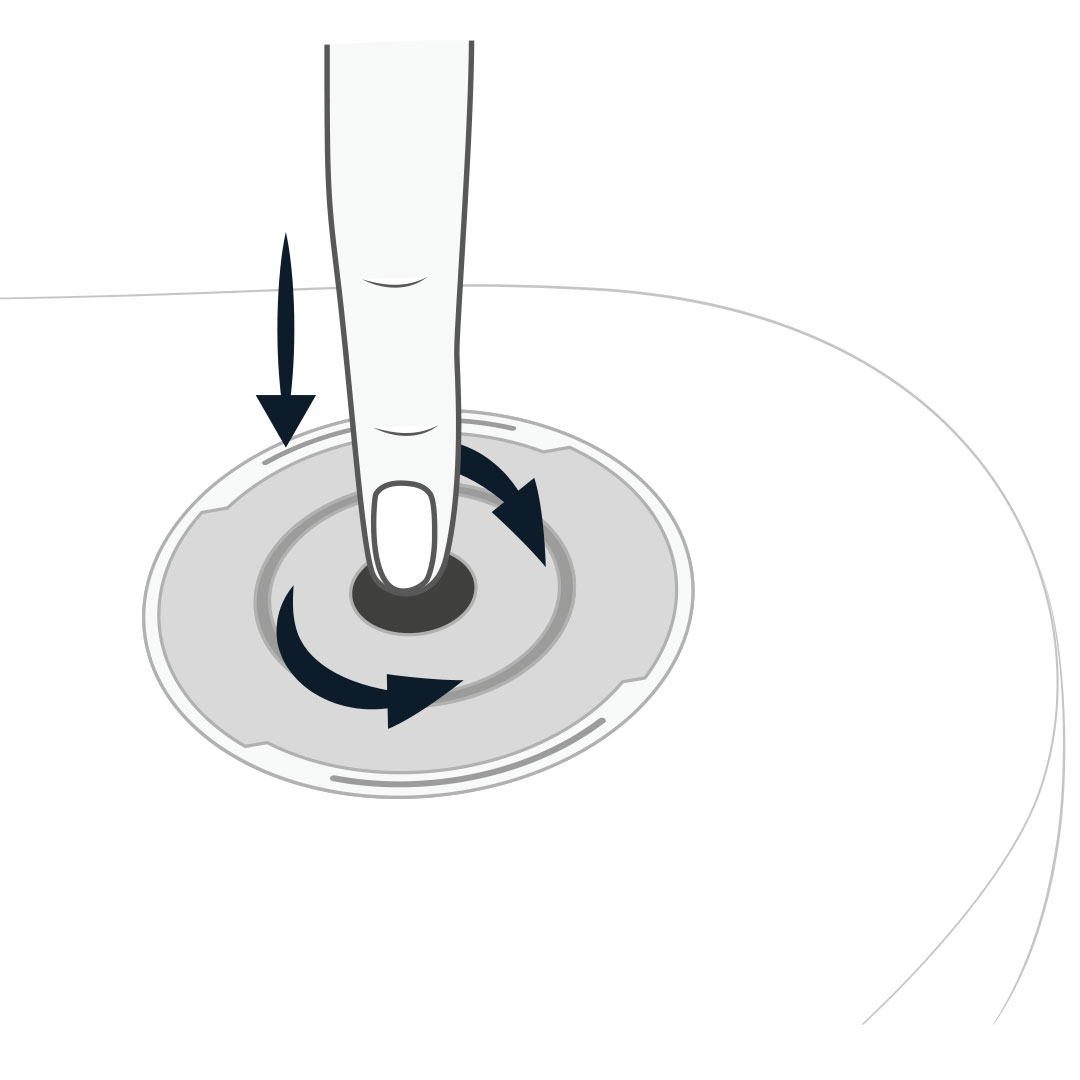
2. Check that the valve is in the upper position (closed). To check; push down on the valve and turn left or right. The valve can lock down or up. (valve pin down is open; valve pin up is closed)
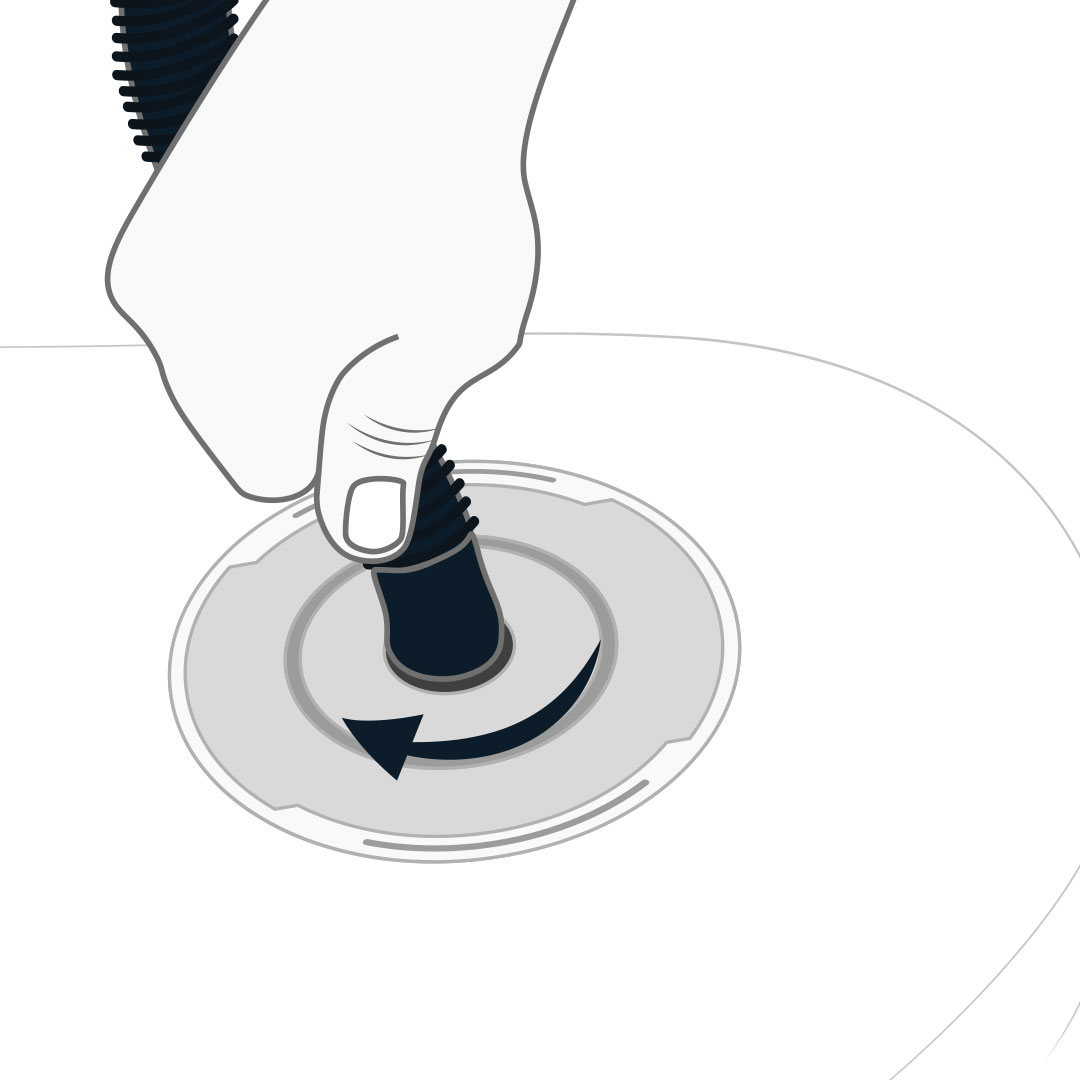 3. Connect the pump hose by pushing down and twisting clockwise. It should lock into place. Note: this opens the valve automatically and should be able to pump air into the board.
3. Connect the pump hose by pushing down and twisting clockwise. It should lock into place. Note: this opens the valve automatically and should be able to pump air into the board.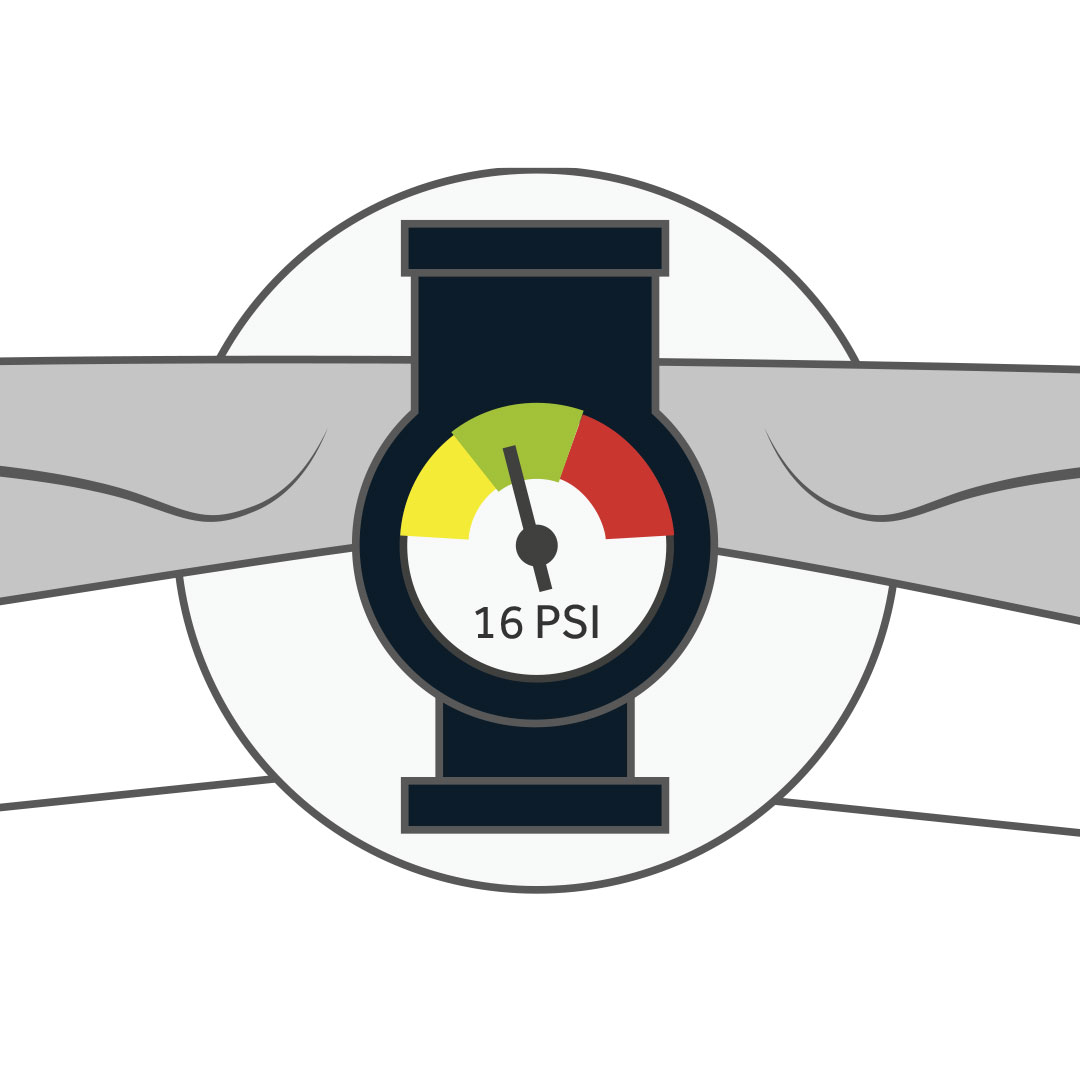 4. Pump until you reach the desired pressure. Minimum (16 PSI) recommended pressures for fun and recreation. Maximum (20 PSI) recommended for performance paddling experience.
4. Pump until you reach the desired pressure. Minimum (16 PSI) recommended pressures for fun and recreation. Maximum (20 PSI) recommended for performance paddling experience.
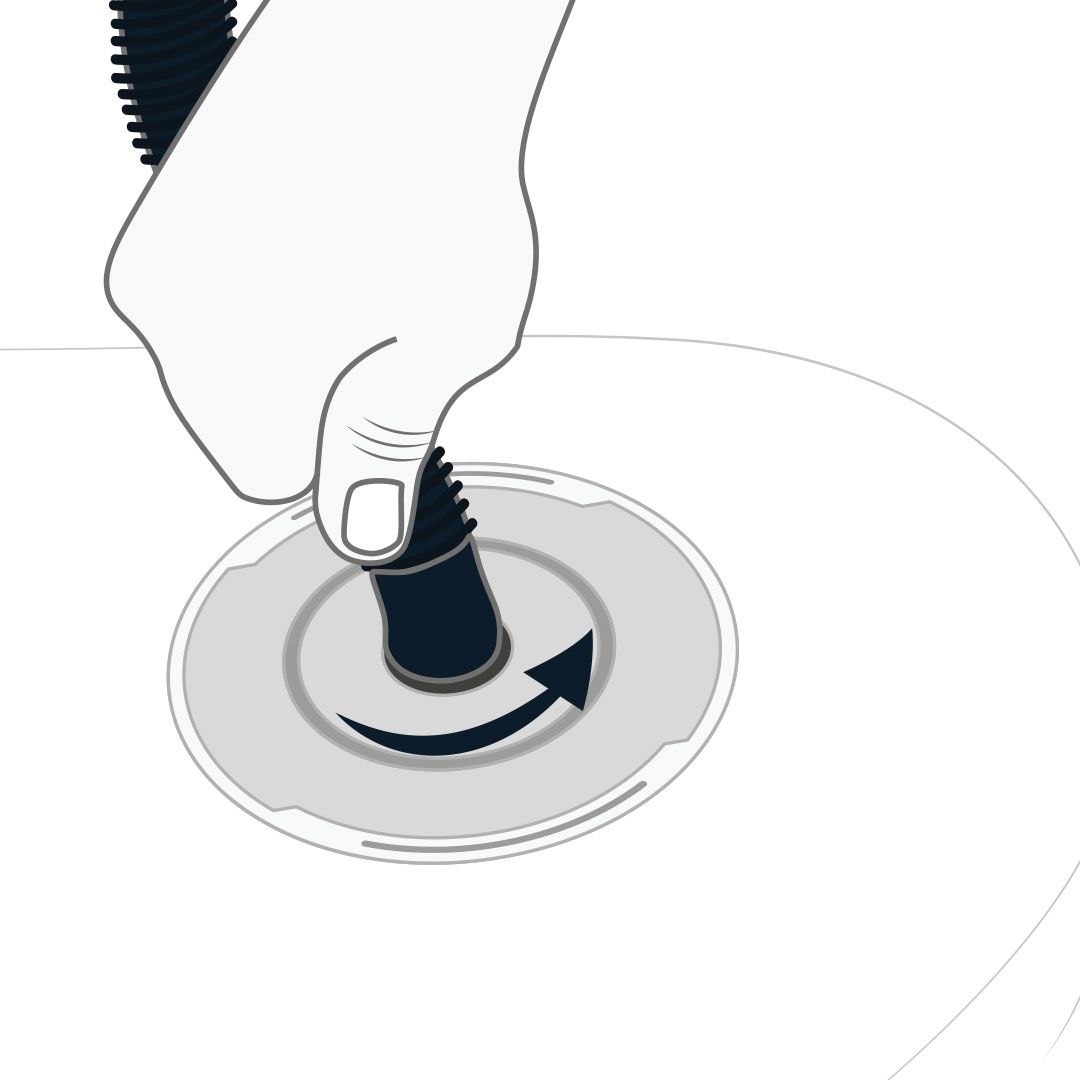 5. To release the pump hose, push down and turn the hose anti-clockwise. Note a small amount of air will release, but the valve should quickly close and lock the air automatically.
5. To release the pump hose, push down and turn the hose anti-clockwise. Note a small amount of air will release, but the valve should quickly close and lock the air automatically.
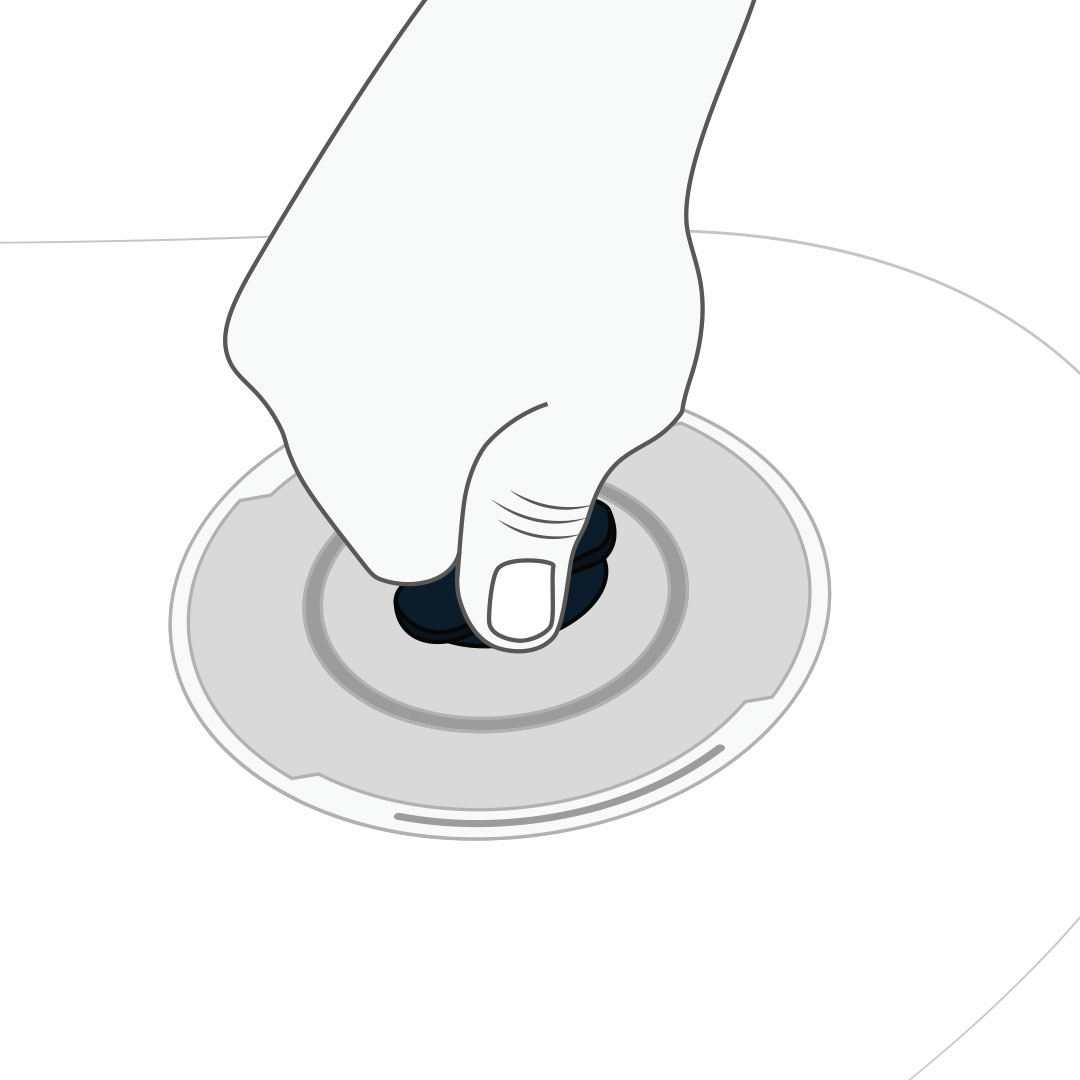
6. Place back the dust-cap cover on the valve.
Installing the Fins
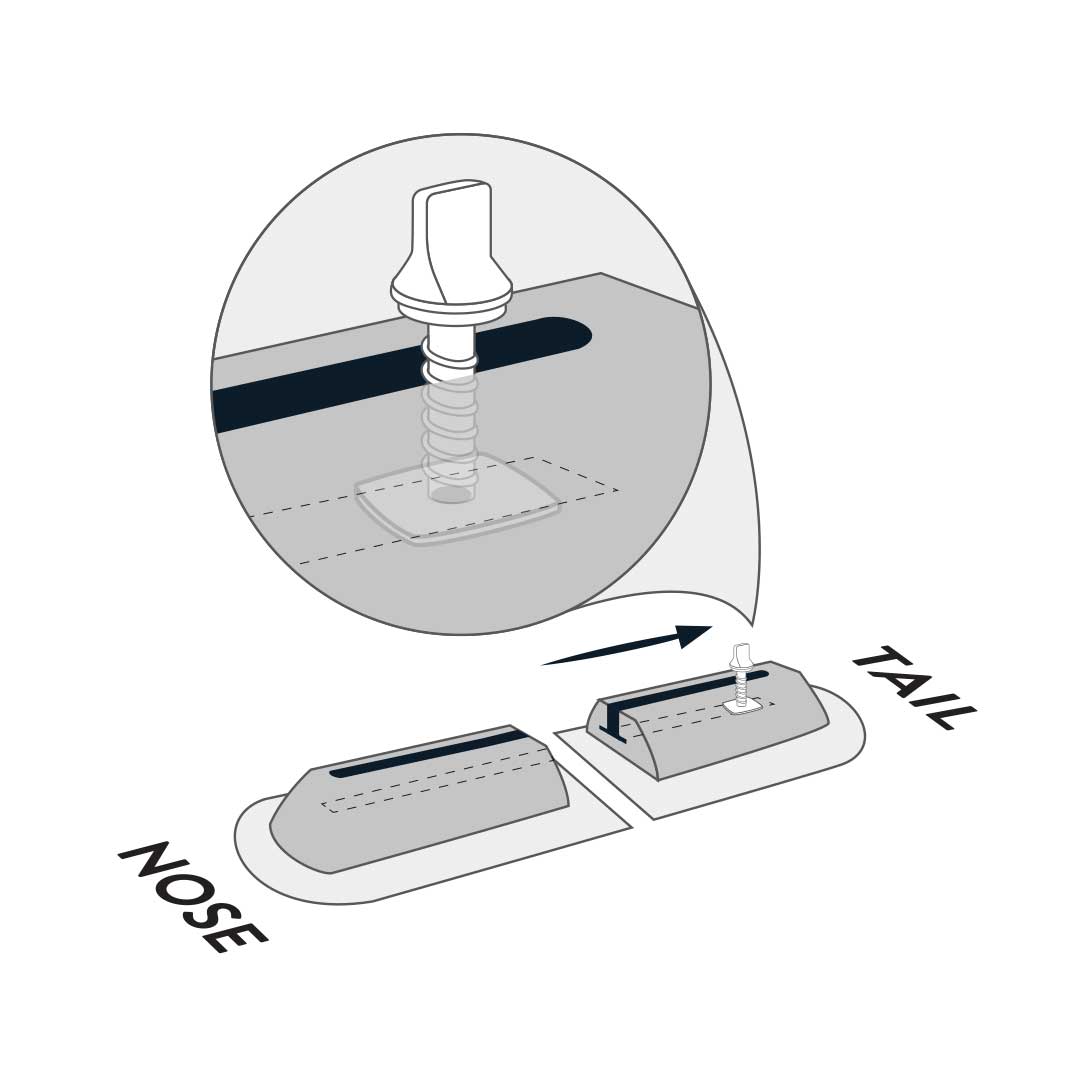
1. With the aluminium plate loosely secured on the end of the screw, slide it into the track from the centre of the finbox and slide towards the tail of the board. Take out the thumbscrew.
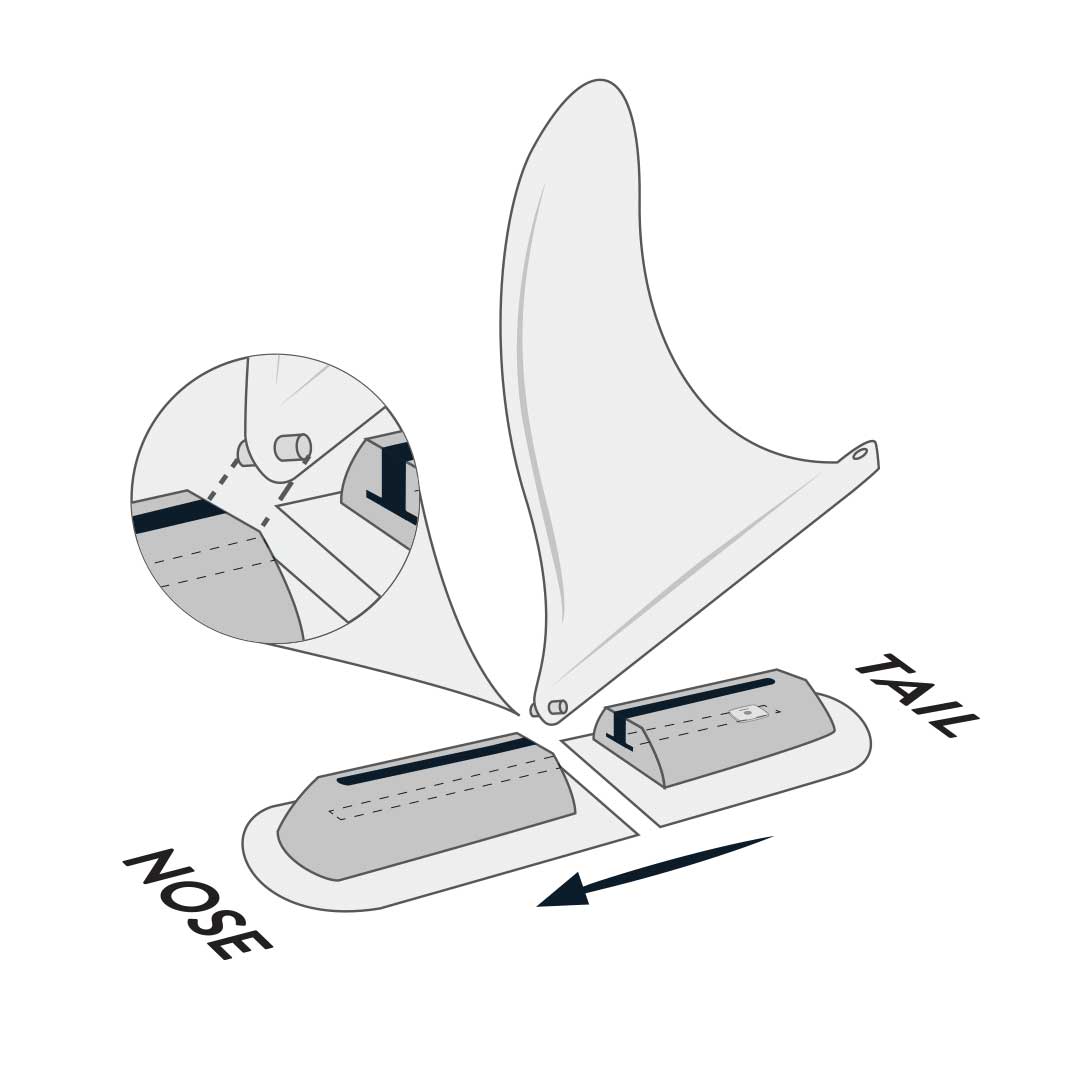
2. Slide the front of the fin into the finbox so that the pins are down in the track of the finbox and slide towards the nose of the finbox.
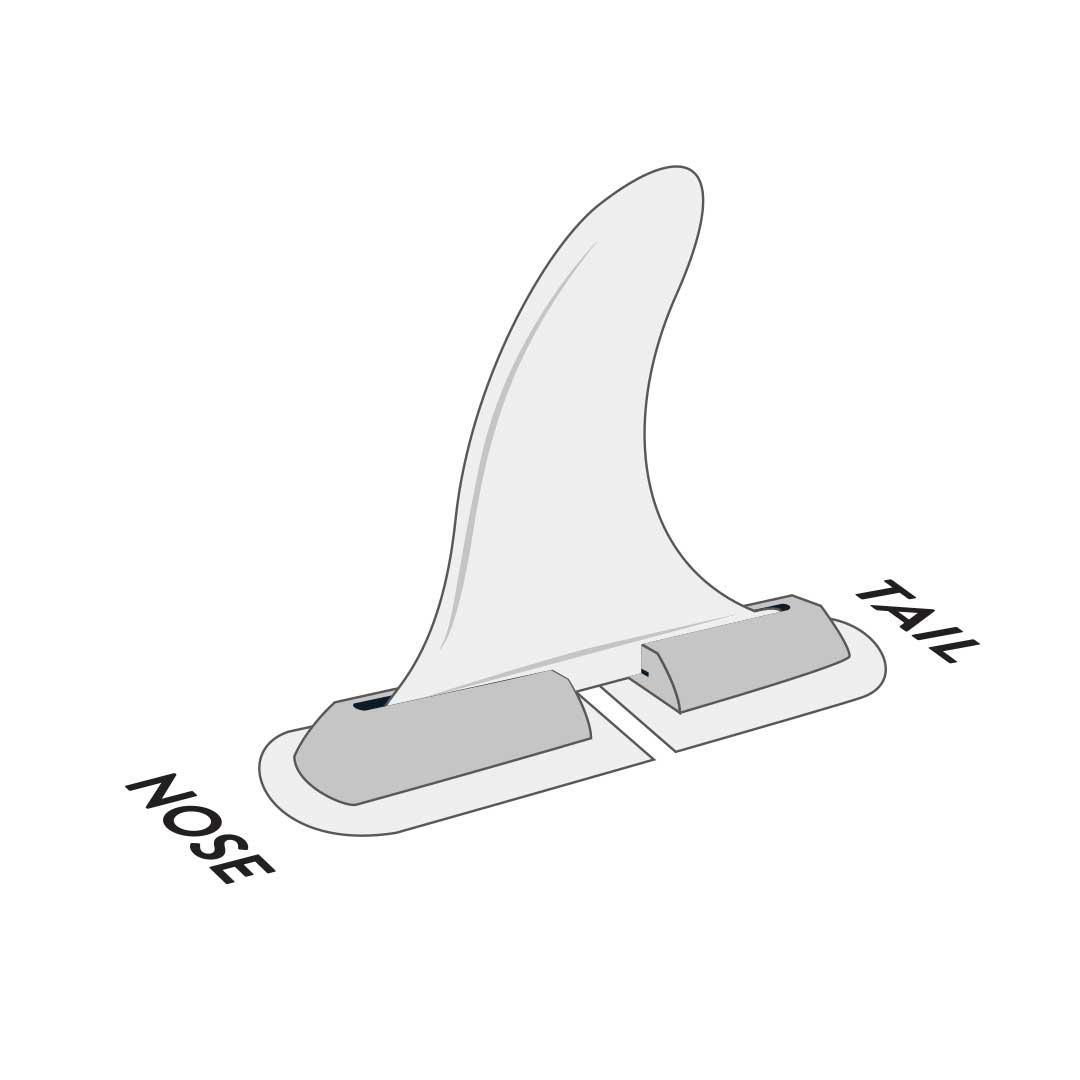
3. Now move the fin so that the screw hole is lined up with the plate you placed earlier at the bottom finbox.
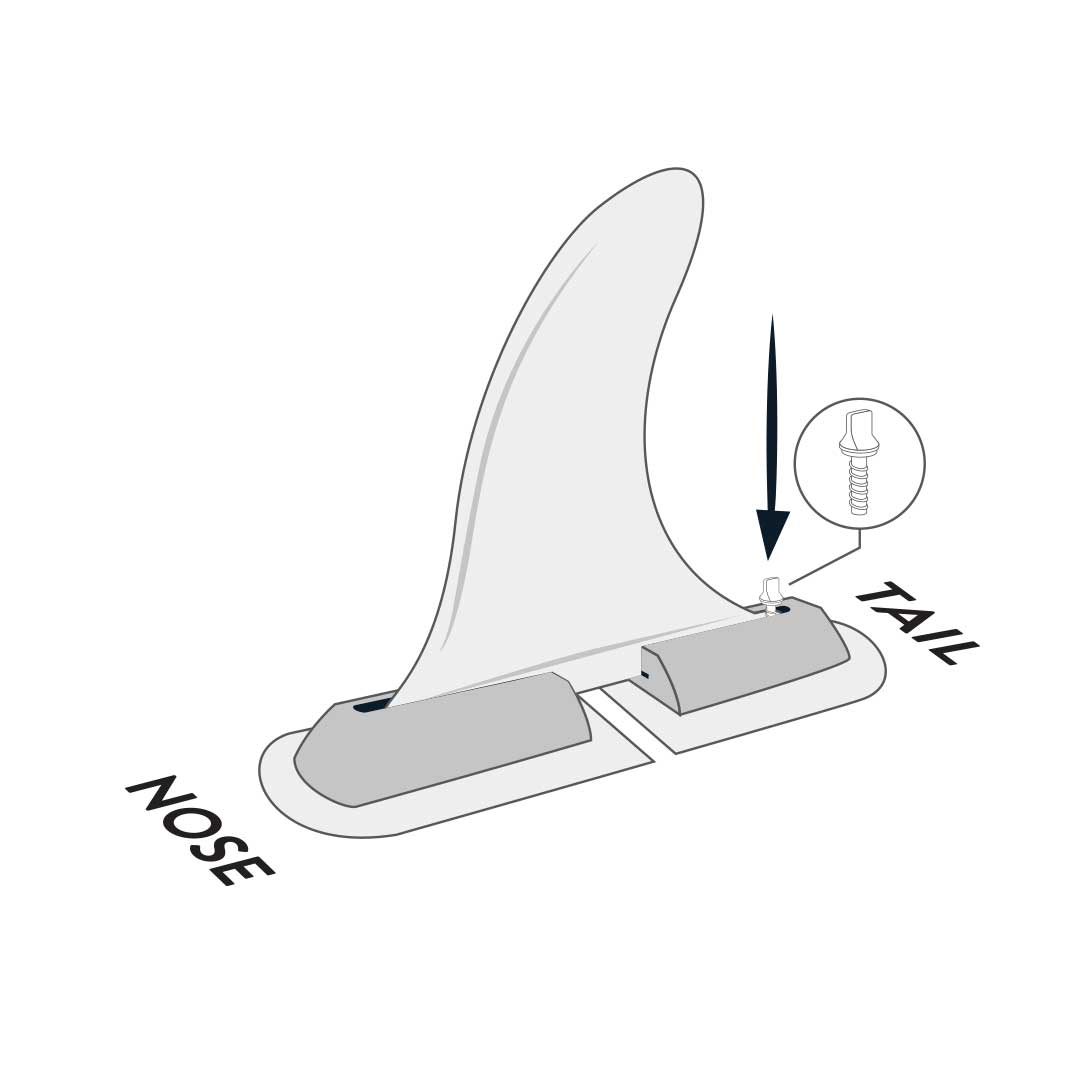
4. Once both holes are aligned, Insert the screw and tighten it up until it is snug, but do not over-tighten.
Deflating and Packing your board
1. Remove the fins before everything else.
2. Unlock the valve: Remove the dust cap and press down on the center of the valve pin and twist it counter-clockwise until it is locked in the "pin down" (OPEN) position, allowing air to escape.
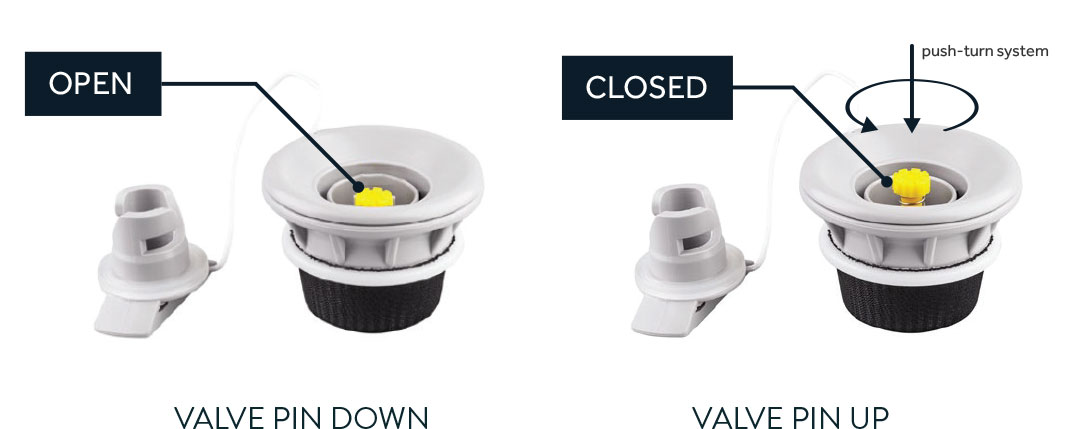
IMPORTANT: DONT LET SAND, DUST OR DEBRIS ENTER THE BOARD
3. After a few minutes, start to roll or fold at the nose to force the air out at the tail where the valve is located.
4.Set back the valve "pin up" (CLOSED) position. Use your pump's DEFLATE mode function to get all the air out of the board.
5. Place back the valve cap and use the included board strap to secure tightly your rolled board.
6. Place your deflated, rolled board, along with the paddle, fin, and pump, into the storage bag.
Board Care

Do not leave in direct sunlight
Damage resulting from heat is not covered by the manufactures warranty!! Never leave your paddleboard exposed to direct sunlight, when out of the water. Always keep in the shade when not in the water. If you must expose your board to direct sunlight when not in use depressurize the board to less than 10 PSI.

Recommended Pressures
Follow the recommended pressures for each board. Do not overinflate under any circumstance. Minimum pressures are suitable for most board use with the maximum pressures set to achieve the most performance. DO NOT EXCEED THE MAXIMUM PRESSURE.
| BOARD MODEL | RECOMENDED | MAXIMUM | NOT IN USE |
|---|---|---|---|
| Airlie | 15-17 PSI | 18 PSI | <10 PSI |
| Bondi | 16-20 PSI | 20 PSI | <10 PSI |
| Byron | 16-18 PSI | 20 PSI | <10 PSI |
| Fairlight | 15-18 PSI | 20 PSI | <10 PSI |
| Seaton | 16-18 PSI | 20 PSI | <10PSI |
| Sorrento | 15-18 PSI | 20PSI | <10PSI |

Tips for transporting
This inflatable board is designed to be compact for convenient storage & travel. Due to a lack of weight when inflated, they should not be transported on the roof of a vehicle.
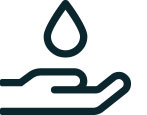
Board Maintenance
Sun, sand, and saltwater will degrade any man-made material over time. Rinse OFF sand and saltwater deposits from your paddleboard with freshwater and store them in a cool, dry environment after each use.